OnePlus 7 Pro Review - Screen Review
Screen
OnePlus 7 Pro Screen
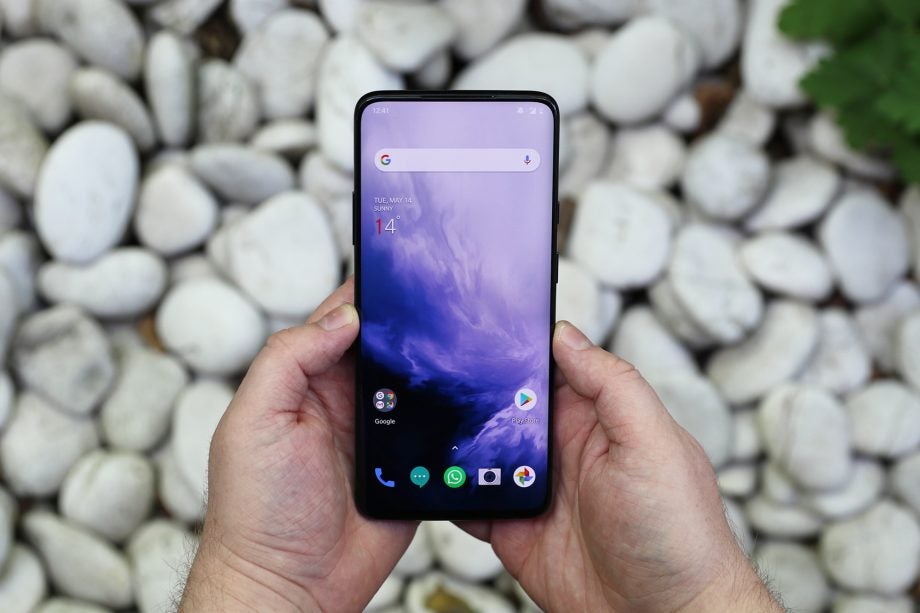
Sections
- Page 1 OnePlus 7 Pro Review
- Page 2 Camera Review
- Page 3 Battery Life Review
- Page 4 Screen Review
- Page 5 Performance Review
- Page 6 OnePlus 7 Pro 5G Review
The OnePlus 7 Pro’s screen is absolutely excellent
- A 6.67-inch 19.5:9 QHD+ resolution HDR10+ compliant ‘Fluid AMOLED’ display dominates the front of the OnePlus 7 Pro.
- The ‘Fluid’ terminology is in reference to the screens 90Hz refresh rate, which allows for impressively smooth visuals.
- There’s support for HDR10+ too.
The ‘Pro’ name doesn’t seem justified anywhere more so than when looking at this phone’s display. The company’s phones have used AMOLED panels as far back as the OnePlus X; primarily as they’re able to offer deeper blacks and more vibrant colours than their LCD-toting competitors, but the OnePlus 7 Pro’s screen is on another level.
Related: OnePlus 7 review
It’s the first time we’ve been presented with the term ‘Fluid AMOLED’, but the panel that OnePlus has used here sports decidedly apt abilities, the combination of which you really can’t find anywhere else.
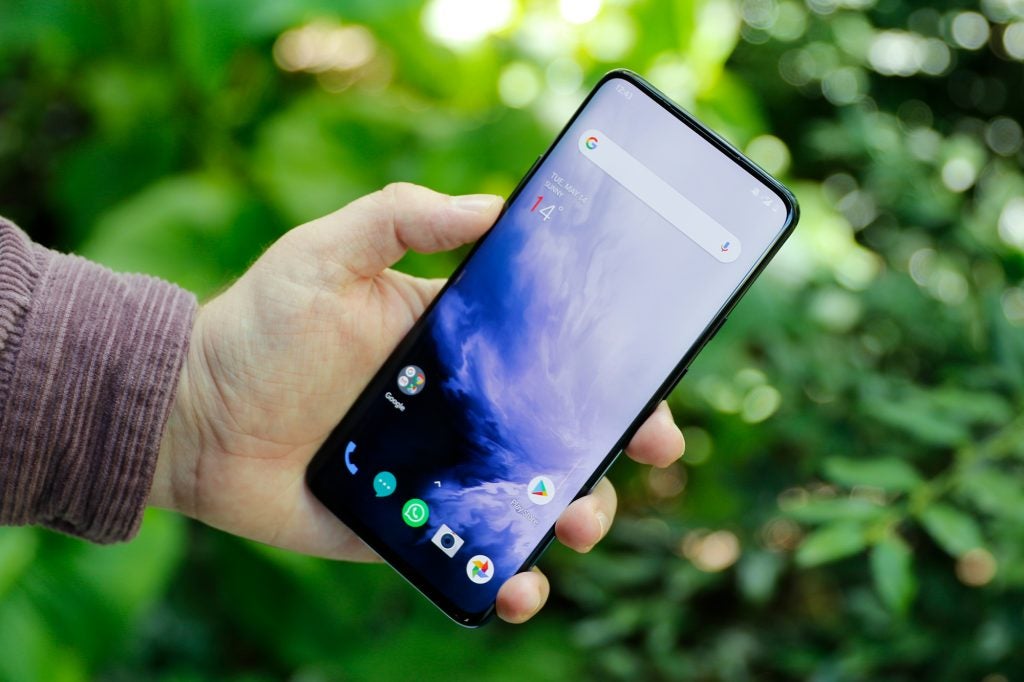
Whether you’re just swiping around the user interface or watching compatible content, fluidity enhances the viewing experience everywhere. Motion is smoothed, with less apparent ghosting, and as a result the effect it creates supports the phone’s cutting-edge nature.
OnePlus has upped the display’s refresh rate to 90Hz and once you’ve become accustomed to it, you’ll be hard-pressed to revert back to a more conventional 60Hz display without the device in question feeling dated and laggy by comparison.
The OnePlus 7 Pro isn’t the first display to leverage this feature but it’s still a rarity, with Asus’ gaming-centric ROG Phone being the only other handset in possession of a 90Hz OLED panel (at the time of writing). Apple has a similar technology, branded ProMotion, which you’ll find on its iPad Pro tablet line, while both the original Razer Phone and Razer Phone 2 boast variable refresh-rates that can be set up to 120Hz.
Even though battery longevity seems ample out the box, dropping the refresh rate down to 60Hz has the potential to extend it even further. What’s more, enabling the phone’s battery saver mode will make this switch automatically.
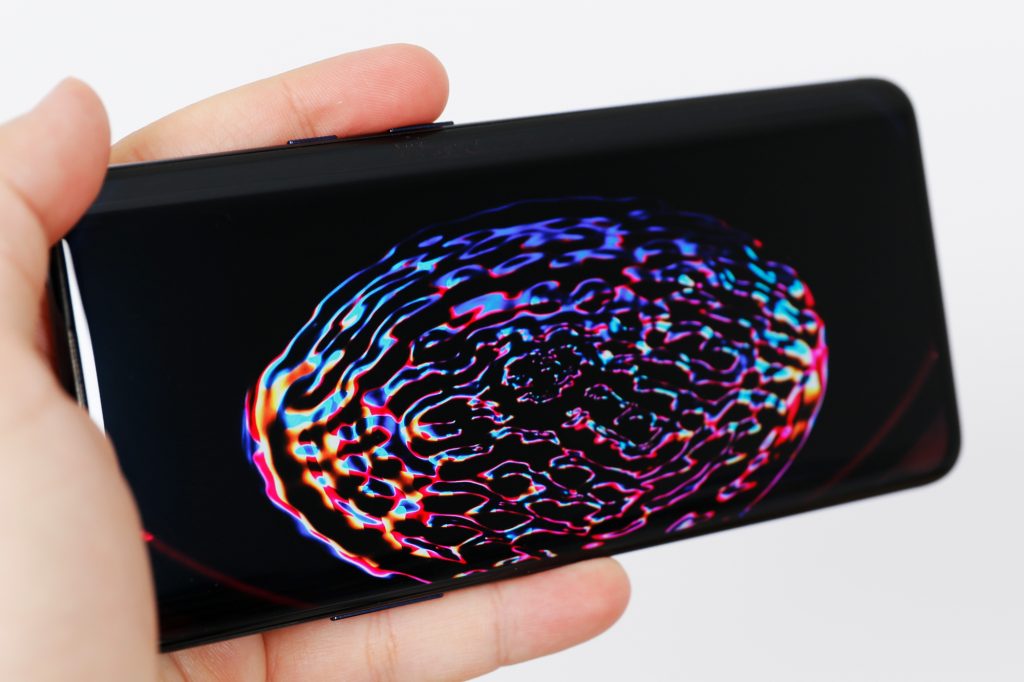
HDR visuals on 6.67-inch display are stunning
For the first time on a OnePlus phone, HDR playback is finally supported on services including Netflix, YouTube and Amazon Prime Video. The phone is among the few to cater to the HDR10+ standard too, which allows for a wider brightness range and greater colour depth.
Related: What is HDR?
There’s also the matter of pixels, with this being the first case of a OnePlus phone transcending above Full HD+ resolution. Along with the 90Hz refresh rate and HDR10+ support, OnePlus decided to elevate the viewing experience even further by splashing out on a 19.5:9 aspect ratio, curved Quad HD+ (3120×1440) panel, granting the viewer a rich 516ppi (pixels-per-inch).
For reference, the iPhone XS Max packs in a comparatively underwhelming 458ppi, despite its smaller display size (at 6.5-inches).
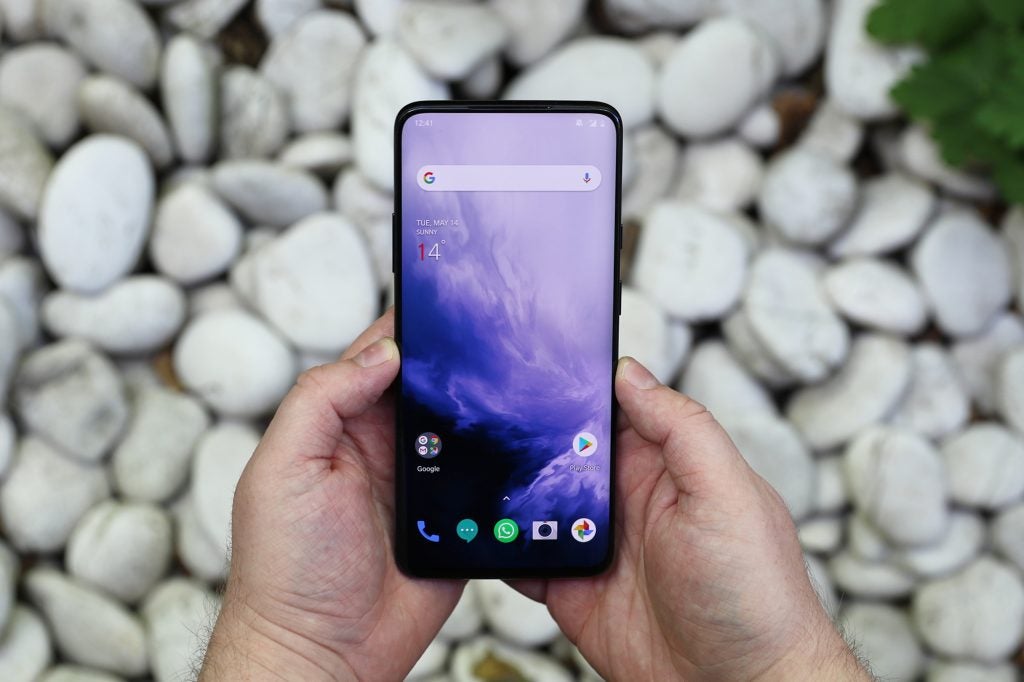
In real-world use, there’s no denying the OnePlus 7 Pro’s excellence, however, during our display testing something interesting did crop up.
The use of an AMOLED panel means that, unlike LCD technology, when showing complete darkness or black on-screen, the pixels in question emit no light. By comparison, LCDs emit light whatever colour or shade they’re displaying as they rely on a separate backlight.
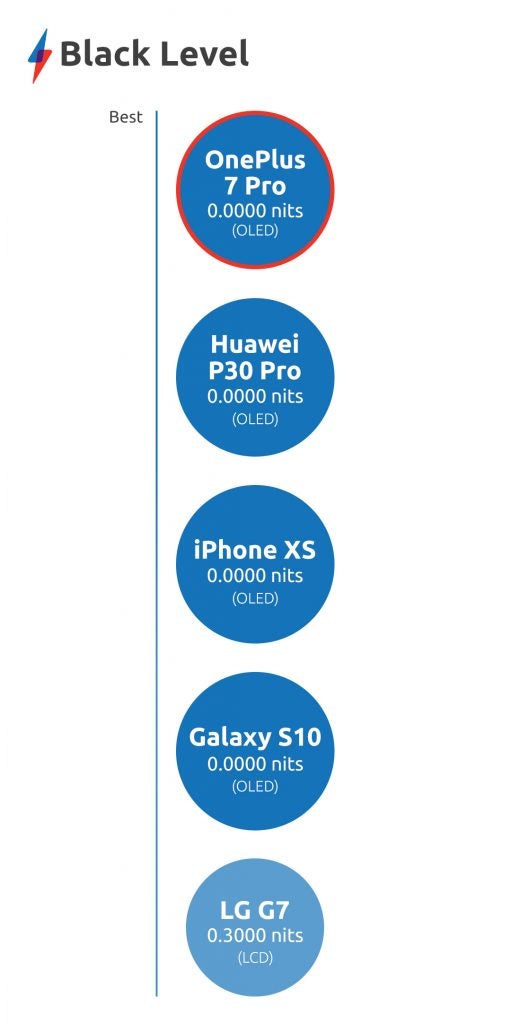
It’s this ability to shut off the light output of independent pixels completely that gives any phone with an OLED display a zero black level and an infinite contrast ratio.
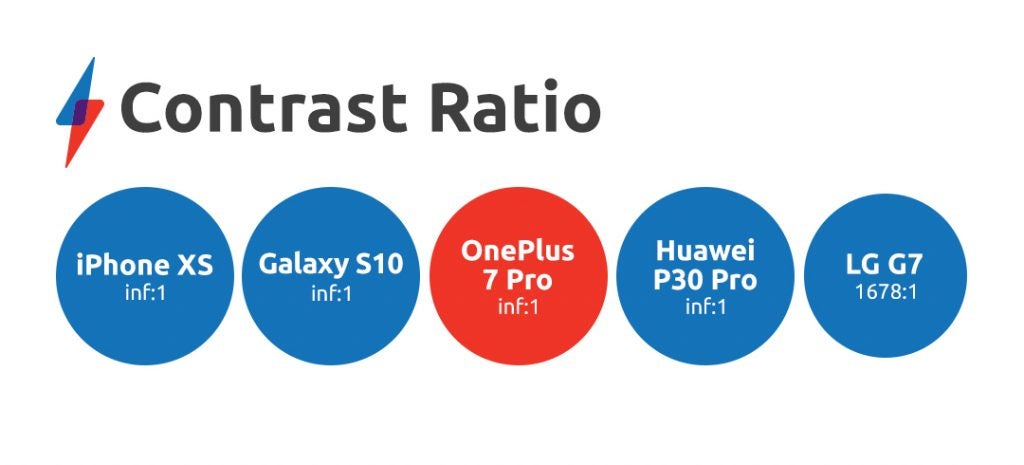
As for peak brightness, OnePlus claims their new top dog tops out at an impressive 800 nits, which places it ahead of the likes of the iPhone XS and Samsung Galaxy Note 9. In real-world surroundings, our equipment was only able to get a read of just over half that.
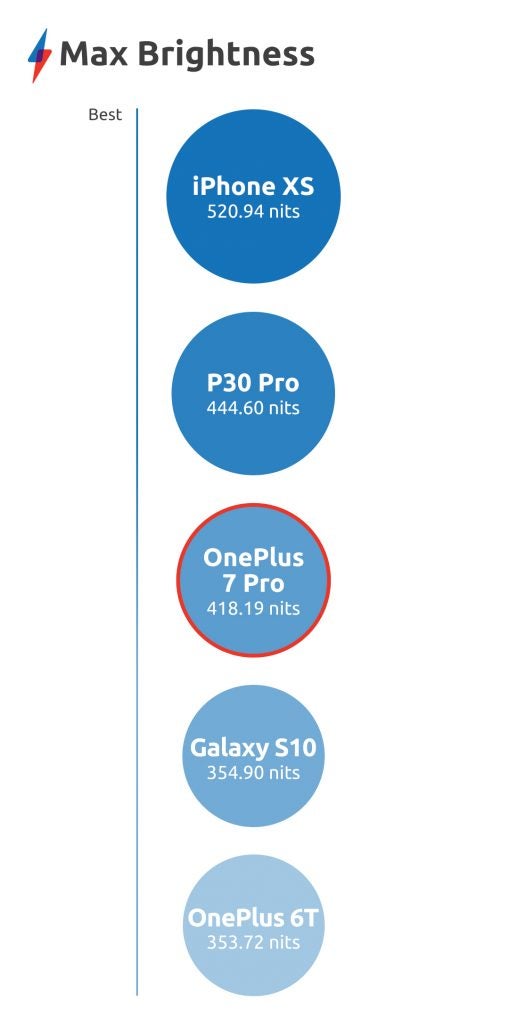
There’s also the matter of colour accuracy, with most phones able to reach full 100 percent coverage of the sRGB gamut and score higher than the 7 Pro did when rating for Adobe RGB and DCI-P3 compatibility.
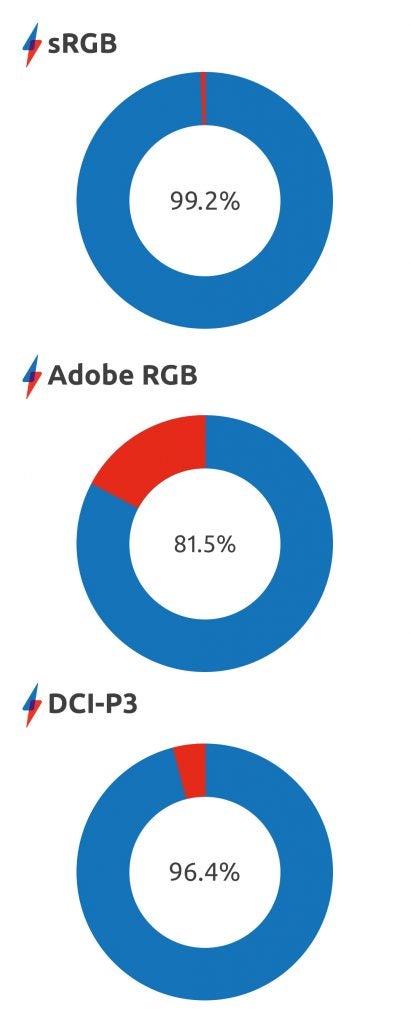
Such results actually go against OnePlus’ claims, however, our test figures are based on the out-of-box display settings and the 7 Pro actually offers a lot of control in that area. There’s the option to switch colour profiles, plus a dedicated DCI-P3 mode, should you wish to ensure the most accurate possible viewing experience the phone can muster.
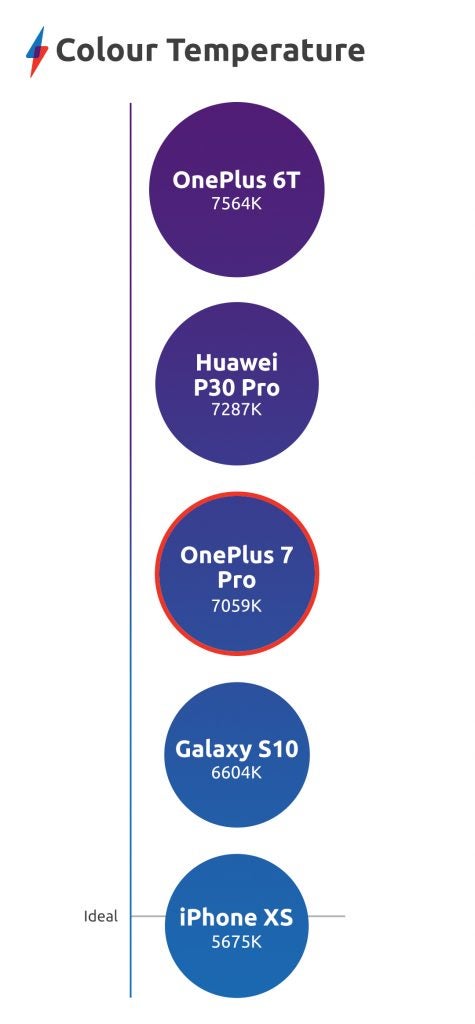
That same default colour setting also marks the OnePlus 7 Pro’s display as a little on the cool side; not uncommon with OLED panels. However, by using those same display settings, it’s simple enough to modify screen colour temperature towards the warmer end of the spectrum, should you wish.


